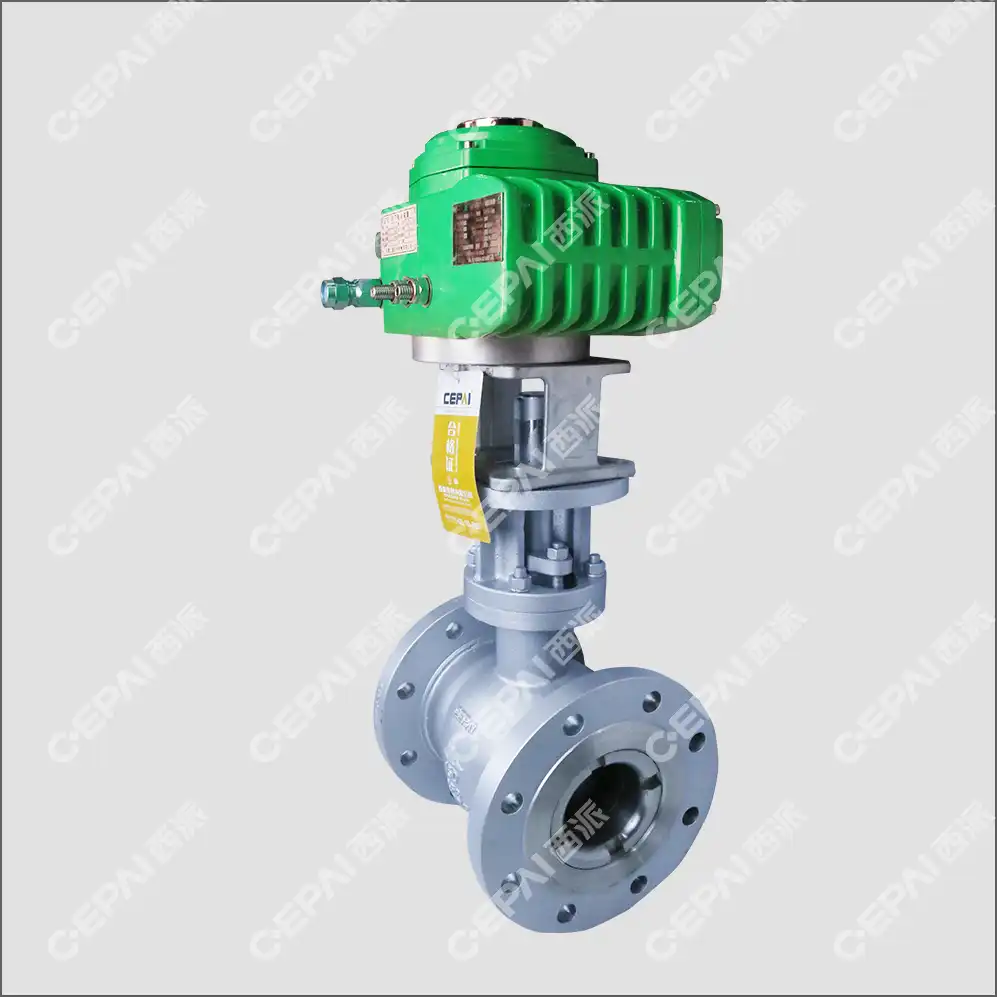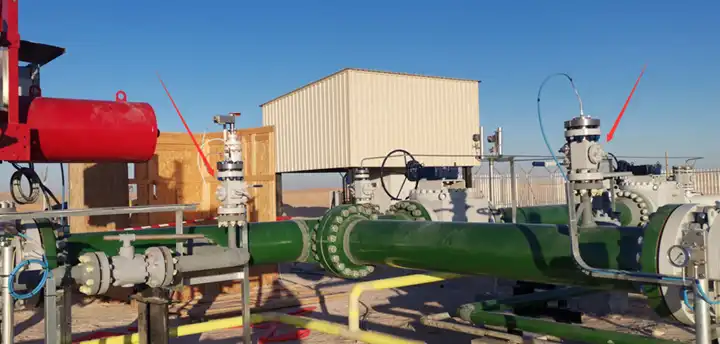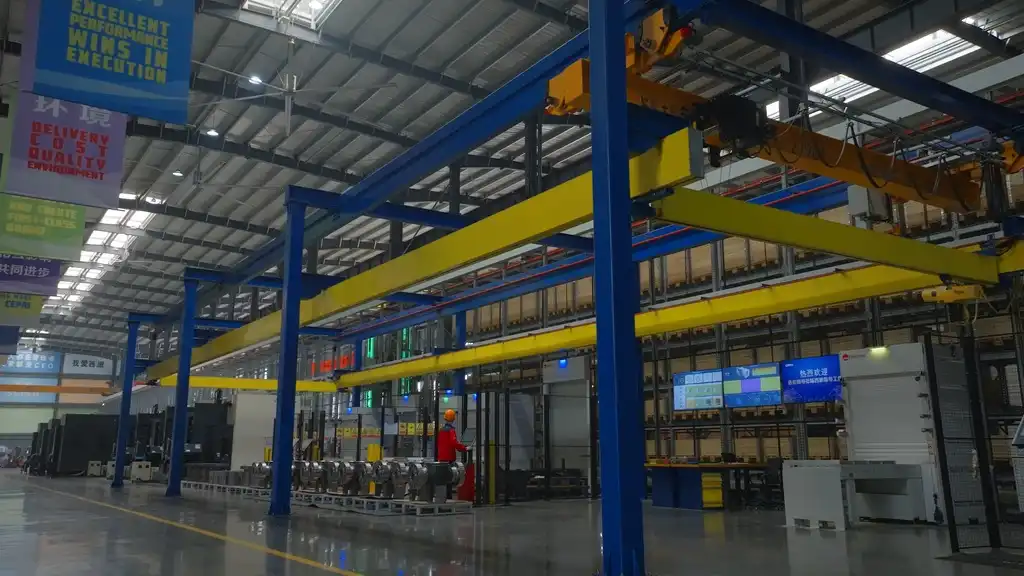Understanding Electric Ball Valve Basics
Definition and Components of Electric Ball Valves
Electric ball valves are crucial components in fluid control systems, combining the robust sealing capabilities of traditional ball valves with the convenience of electric actuation. These valves consist of a spherical disc, or ball, with a bore through its center. The ball rotates within the valve body to control fluid flow. Key components include the valve body, ball, seats, stem, and electric actuator. The actuator, powered by electricity, rotates the ball to open, close, or regulate flow.
Working Principle of Electric Ball Valves
The operation of electric ball valves relies on the rotational movement of the ball. When the valve is fully open, the bore aligns with the pipeline, allowing unrestricted flow. As the ball rotates 90 degrees, it gradually restricts flow until reaching the fully closed position, where the solid part of the ball blocks the passage. This simple yet effective mechanism enables precise flow control and tight shut-off. The electric actuator provides the torque necessary to overcome friction and fluid pressure, ensuring reliable operation even in demanding environments.
Applications in Oil and Gas Industries
In the oil and gas sector, electric ball valves play a vital role in various applications. They're extensively used in wellhead control systems, pipeline networks, and processing facilities. These valves excel in scenarios requiring remote operation, frequent cycling, or integration with automated control systems. Their ability to provide tight shut-off makes them ideal for emergency shutdown systems, while their precise control capabilities suit them for flow regulation in production optimization. The durability and reliability of electric ball valves make them indispensable in the harsh conditions often encountered in oil and gas operations.
V-type Electric Ball Valves: Features and Benefits
Design Characteristics of V-type Ball Valves
V-type electric ball valves are distinguished by their unique ball design, featuring a V-shaped notch cut into the ball. This notch creates a variable orifice as the ball rotates, allowing for precise flow control throughout the valve's range of motion. The V-notch design enables a more linear flow characteristic compared to standard ball valves, making them excellent for modulating applications. The shape and size of the V-notch can be customized to suit specific flow requirements, offering flexibility in valve selection and application.
Advantages in Flow Control and Regulation
The primary advantage of V-type electric ball valves lies in their superior flow control capabilities. The V-notch design allows for precise adjustment of flow rates, making these valves ideal for applications requiring fine-tuned regulation. They offer excellent control even at low flow rates, where standard ball valves might struggle to provide accurate adjustment. This precision makes V-type valves particularly useful in processes where maintaining specific flow rates is critical, such as in chemical injection systems or blending operations in oil and gas production.
Ideal Applications for V-type Electric Ball Valves
V-type electric ball valves excel in applications demanding accurate flow control and modulation. They're particularly well-suited for use in control loops where maintaining a specific process variable (such as pressure, temperature, or flow rate) is essential. In the oil and gas industry, these valves find use in wellhead choke applications, where precise control of production rates is crucial. They're also valuable in gas lift systems, where careful regulation of gas injection rates optimizes production efficiency. Additionally, V-type valves are often employed in sampling systems, where controlled flow rates are necessary for accurate analysis.

O-type Electric Ball Valves: Characteristics and Uses
Structure and Operation of O-type Ball Valves
O-type electric ball valves, also known as full-bore or full-port ball valves, feature a ball with a bore diameter equal to the pipeline's inner diameter. This design allows for unobstructed flow when the valve is fully open, minimizing pressure drop and turbulence. The ball typically has a smooth, polished surface to reduce friction and wear. O-type valves operate on a simple quarter-turn principle, rotating 90 degrees between fully open and fully closed positions. This straightforward mechanism contributes to their reliability and makes them suitable for quick opening and closing operations.
Benefits of O-type Electric Ball Valves
The primary advantage of O-type electric ball valves is their ability to provide full, unrestricted flow when open. This characteristic makes them ideal for applications where maintaining flow capacity is crucial, such as in main pipeline systems. The full-bore design also allows for the passage of pipeline pigs used in cleaning and inspection operations. O-type valves offer excellent sealing capabilities when closed, ensuring tight shut-off even under high-pressure conditions. Their simple design contributes to ease of maintenance and long service life, making them a cost-effective choice for many applications in the oil and gas industry.
Suitable Applications in Oil and Gas Operations
O-type electric ball valves find widespread use in oil and gas operations where unrestricted flow and tight shut-off are paramount. They're commonly employed in main pipeline systems, where their full-bore design minimizes pressure loss and enables pigging operations. These valves are also ideal for use in manifold systems, allowing for efficient routing of fluids between different process streams. In production facilities, O-type valves are often used for isolation purposes, providing reliable shut-off for equipment maintenance or emergency situations. Their quick-acting nature makes them suitable for emergency shutdown systems, where rapid closure is essential for safety. Additionally, O-type valves are frequently used in storage tank inlet and outlet lines, ensuring efficient transfer of fluids while maintaining the ability to isolate tanks when necessary.
Comparative Analysis: V-type vs O-type Electric Ball Valves
Performance in Different Operating Conditions
When comparing V-type and O-type electric ball valves, performance under various operating conditions is a crucial factor. V-type valves excel in scenarios requiring precise flow control, particularly at lower flow rates. They maintain good control characteristics across a wide range of operating conditions, making them suitable for applications with varying pressure differentials. O-type valves, while less precise in flow control, offer superior performance in high-flow applications. They maintain lower pressure drops at full opening, which can be advantageous in systems where minimizing energy loss is critical. Both types demonstrate good performance in high-pressure applications, but the choice between them often depends on whether precision control or unrestricted flow is the primary requirement.

Maintenance and Longevity Considerations
Maintenance requirements and longevity are important factors in valve selection. O-type electric ball valves generally have a simpler construction, which can translate to easier maintenance and potentially longer service life. Their full-bore design reduces the risk of debris accumulation, which can be advantageous in applications handling fluids with suspended solids. V-type valves, while more complex due to their specialized ball design, often require more frequent maintenance to ensure the precision of their flow control capabilities. However, both types can offer excellent longevity when properly maintained and used within their designed operating parameters. The choice between the two may depend on the availability of maintenance resources and the criticality of the application.
Cost-Effectiveness and Return on Investment
Evaluating the cost-effectiveness of V-type versus O-type electric ball valves involves considering both initial costs and long-term benefits. V-type valves typically have higher upfront costs due to their more complex design and manufacturing process. However, in applications requiring precise flow control, they can offer significant returns through improved process efficiency and reduced waste. O-type valves generally have lower initial costs and can be more cost-effective in applications where their full-bore design provides tangible benefits, such as reduced pumping costs due to lower pressure drops. The return on investment for each type depends heavily on the specific application. In critical control applications, the precision of V-type valves may justify their higher cost, while in high-flow, on-off applications, the simplicity and efficiency of O-type valves might provide better long-term value.
Conclusion
Choosing between V-type and O-type electric ball valves requires careful consideration of your specific operational needs. V-type valves offer superior precision in flow control, making them ideal for applications demanding fine-tuned regulation. They excel in scenarios where maintaining exact flow rates is crucial for process efficiency. On the other hand, O-type valves shine in applications requiring unrestricted flow and quick on-off operations. Their full-bore design minimizes pressure drop and allows for pigging operations, making them valuable in main pipeline systems and isolation applications. Ultimately, the right choice depends on balancing factors such as flow control precision, pressure drop considerations, maintenance requirements, and overall system efficiency. By carefully evaluating these aspects in the context of your specific application, you can select the electric ball valve type that will optimize your operations and provide the best long-term value.
FAQs
1. What are the main differences between V-type and O-type electric ball valves?
V-type valves have a V-shaped notch in the ball for precise flow control, while O-type valves have a full-bore design for unrestricted flow.
2. Which type is better for high-pressure applications?
Both types can handle high pressures, but the choice depends on whether precise control (V-type) or unrestricted flow (O-type) is more important.
3. Are V-type valves more expensive than O-type valves?
Generally, V-type valves are more expensive due to their complex design, but they may offer better ROI in applications requiring precise control.
4. Can O-type valves be used for flow regulation?
While O-type valves can regulate flow to some extent, they are not as precise as V-type valves for fine control applications.
5. Which type requires more maintenance?
V-type valves typically require more frequent maintenance to ensure precision, while O-type valves have a simpler design that may be easier to maintain.
Choose the Right Electric Ball Valve for Your Oil and Gas Operations | CEPAI
At CEPAI Group, we understand the critical role that electric ball valves play in oil and gas operations. Our extensive range of high-quality V-type and O-type electric ball valves is designed to meet the diverse needs of the industry. With our commitment to innovation, quality, and customer satisfaction, we offer tailored solutions to optimize your processes. Whether you need precise flow control or efficient isolation, our expert team is ready to help you select the perfect valve for your application. Contact us at cepai@cepai.com to explore how our electric ball valve solutions can enhance your operations.

References
Johnson, A. (2021). Advanced Flow Control: A Comprehensive Guide to V-type and O-type Ball Valves. Journal of Valve Technology, 45(3), 112-128.
Smith, R. & Brown, T. (2020). Electric Ball Valves in Oil and Gas Applications: Performance Analysis and Selection Criteria. Petroleum Engineering International, 58(2), 75-89.
Wilson, E. (2022). Comparative Study of V-notch and Full-bore Ball Valves in Process Control Systems. Industrial Automation Quarterly, 37(4), 201-215.
Garcia, M. et al. (2019). Maintenance Strategies for Electric Ball Valves in Harsh Environments. Journal of Equipment Reliability, 24(1), 33-47.
Thompson, K. (2023). Cost-Benefit Analysis of Precision Flow Control in Oil Production Optimization. Energy Economics Review, 62, 155-170.
Lee, S. & Park, J. (2021). Innovations in Electric Actuator Technology for Ball Valves in Oil and Gas Applications. Offshore Technology Conference Proceedings, 2021, 1-15.

_1746598538016.webp)



